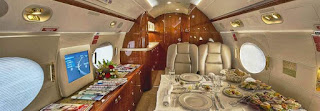https://centraljetcharter.com/stratos-714.html
In doing so, we have been realistic in the estimation of intake pressure recovery, bleed air flows and mechanical power extraction, all of which impact the engine performance.
It has carried out a detailed trade study and have found the optimum stall speed for the Stratos aircraft to be 63 knots. As this is above 61 knots, the FAA will require demonstration of increased crash worthiness which will require additional fuselage structural weight.
However, these are offset by savings in wing weight and, overall, 63 knots gives the best combination of weight, performance, field performance and low speed handling.
In Europe single engine aircraft are required to stall at 61 knots or below. EASA certified versions of the Stratos will have a slightly lower maximum takeoff weight to comply with this requirement.
In doing so, we have been realistic in the estimation of intake pressure recovery, bleed air flows and mechanical power extraction, all of which impact the engine performance.
It has carried out a detailed trade study and have found the optimum stall speed for the Stratos aircraft to be 63 knots. As this is above 61 knots, the FAA will require demonstration of increased crash worthiness which will require additional fuselage structural weight.
However, these are offset by savings in wing weight and, overall, 63 knots gives the best combination of weight, performance, field performance and low speed handling.
In Europe single engine aircraft are required to stall at 61 knots or below. EASA certified versions of the Stratos will have a slightly lower maximum takeoff weight to comply with this requirement.




Comments
Post a Comment